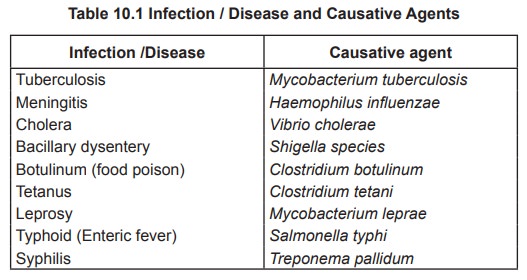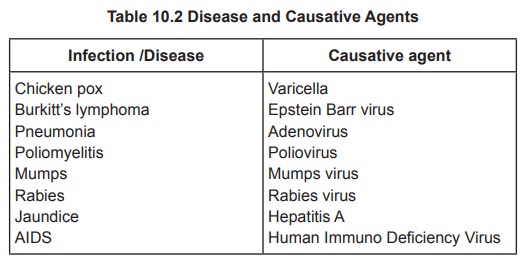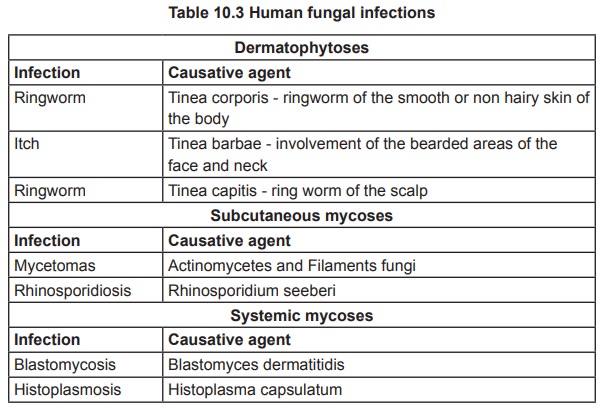Chapter: Biochemistry: Immunology
Infections
Infections
The
invasion and multiplication of a parasite in or on the surface of host tissue
constitute infection.
Infection and immunity involve interaction between thebody (host) and the
infecting microorganism. Based on their relationship to their host,
microorganisms classified as saprophytes (free living microbes that subsist on
dead or decaying organic matter, mostly found in soil). Parasites (establish
themselves and multiply in hosts (it may be pathogens - disease producing) or
commensals (without causing any damage to the host-normal flora). Infections
may be classified in various ways.
Primary
infection : First time infection with a parasite in a host.
Secondary
infection :When new
parasite sets up an infection in a host whose resistance
is lowered by a pre-existing infectious disease.
Focal
infection : Infection or sepsis at localized sites (tonsils).
Cross
infection : When a patient already suffering from a disease a new infection is set up from another host or another
external source.
Reinfections : Subsequent infections by the same parasite in
the host.
Nosocomial
infections :Cross infection
occurring in hospitals .
Latent
infection : Some parasites, following infection, may remain
in the tissues in a latent or hidden form, multiply and producing
clinical disease when
the host resistance is lowered.
Sources
of infection : Many pathogens
are able to infect, which may be From
i.
Human
beings to human beings, or from animals to human beings (Zoonotic disease eg –
Plague).
ii.
From
insects to human beings (arthropod borne disease eg Malaria).
iii.
From
soil, water and contaminated food. This may enter the host by either, direct contact (contagious disease) or indirect (like clothing).
It may also occur by
·
Inhalation of pathogen (Influenza)
·
Ingestion of food or drinks contaminated by pathogens
·
Inoculation directly into the tissues of the host (Tetanus
spores).
·
Congenitally
some pathogens (eg) rubella virus) are able to cross the placental barrier and
infect the fetus in utero (Vertical transmission).
Infectious disease may be localized (
superficial or deep-seated) or generalized (spreading through tissue spaces and
circulation). However, it can be Endemic
(when a small number of cases occur constantly among the population of a
community eg: Typhoid), Epidemic
(The disease flares up and large number of cases develop with in a community with
in a short time. eg: Influenza) or Pandemic(
when an epidemic becomes very widespread areas in the world involving large
number of people with in a short period).
1. Bacteria
Bacteria are unicellular prokaryotic
organisms.Based on the structure and shape three major group of bacteria
namely, Bacillus (cylindrical forms), Coccus (spherical forms) and Spiral.
Humans and animals have abundant normal flora (microbes) that usually do not
produce disease under normal healthy condition. The pathogenesis of bacterial
infection includes initiation of the infectious process and mechanisms that
lead to the development of signs and symptoms of disease. Many bacterial
infections are considered pathogenic, though they are unapparent or
asymptomatic.

2. Viral infection
Virus are acellular obligate intracellular
parasites. It contain only one type of nucleic acid, it may be either single or
double stranded DNA or RNA. The extracellular infectious virus particle is
called the virion. The virion consists of nucleic acid surrounded by a protein
coat called capsid which protects
the nucleic acid from deleterious environment and to introduce viral genome
into the host cells by adsorbing readily to the cell surface.
Pathogenesis of viral infection
viral diseases range from minor ailments such as
the common cold to terrifying diseases such as Rabies and Acquired Immune
Deficiency Syndrome (AIDS). They may be sporadic like Mumps, endemic like
Infectious hepatitis, epidemic like Dengue fever or pandemic like Influenza.
Depending on the clinical outcome, Viral infections can be classified as
unapparent (sub clinical) or apparent (clinical or overt) infections.

3. Fungi
Fungi are eukaryotic protista, recognized as
causative agents of human disease earlier than bacteria. Fungi possess rigid
cell wall containing chitin, mannose and other polysaccharides. They divide
asexually, sexually or by both processes. They may be unicellular or
multicellular. Depending on the cell morphology fungi can be divided into four
classes –
Yeasts :Unicellular
fungi which occur as spherical and reproduce
by simple budding
Yeast
like fungi: Grow partly as
yeast and partly as elongated cells resembling hyphae form a pseudo mycelium
Moulds :
True mycelia and
they are reproduced by the formation of different types of spores.
Dimorphic
fungi :
Occur as filaments (soil) or as yeasts (host tissues) depending on the conditions of growth.
Human fungal infections are usually of two types
superficial and deep seated. Fungi causing superficial mycoses are specialized
saprophytes, with the capacity to digest keratin. Superficial mycoses are of
two types - surface infections (only
on dead layers of skin) and cutaneous
infections (cornified layer).
Human fungal infections are detailed in Table
10.3.

Related Topics